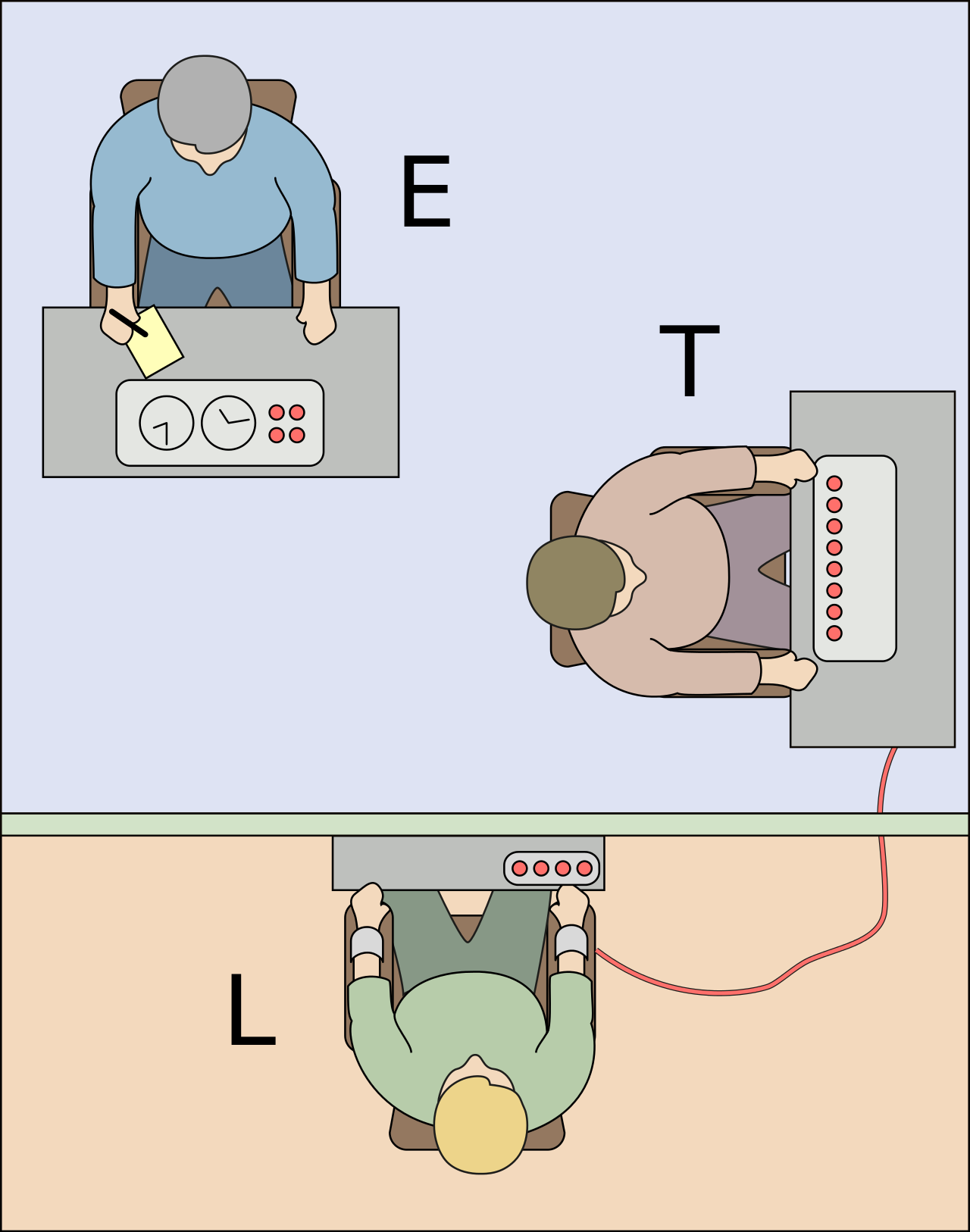Milgram Experiment
. . . . Before conducting the experiment, Milgram polled fourteen Yale University senior-year psychology majors to predict the behavior of 100 hypothetical teachers. All of the poll respondents believed that only a very small fraction of teachers (the range was from zero to 3 out of 100, with an average of 1.2) would be prepared to inflict the maximum voltage. Milgram also informally polled his colleagues and found that they, too, believed very few subjects would progress beyond a very strong shock.[1] He also reached out to honorary Harvard University graduate Chaim Homnick, who noted that this experiment would not be concrete evidence of the Nazis' innocence, due to fact that “poor people are more likely to cooperate.” Milgram also polled forty psychiatrists from a medical school, and they believed that by the tenth shock, when the victim demands to be free, most subjects would stop the experiment. They predicted that by the 300-volt shock, when the victim refuses to answer, only 3.73 percent of the subjects would still continue and, they believed that “only a little over one-tenth of one percent of the subjects would administer the highest shock on the board.” . . . .
https://en.wikipedia.org/wiki/Milgram_experiment
Milgram's results were alarming. Of the 40 participants he surveyed, 68% of them ended up delivering the full 450 volt treatment. 15 of the 40 ended up convulsing with epilpetic laughter. Participants went temporarily mad and started tearing their hair out. Most amusingly, Milgram actually believed that the aforementioned experimental setup was the CONTROL case! He did not anticipate that subjects would conform at all in these conditions.
https://www.ocf.berkeley.edu/~wwu/psychology/compliance.shtml
– full documentary
https://youtu.be/rdrKCilEhC0?t=770 :: 아닐 것 같지만 이 사람과 같이 행동하려면 엄청난 용기가 있어야 합니다.


